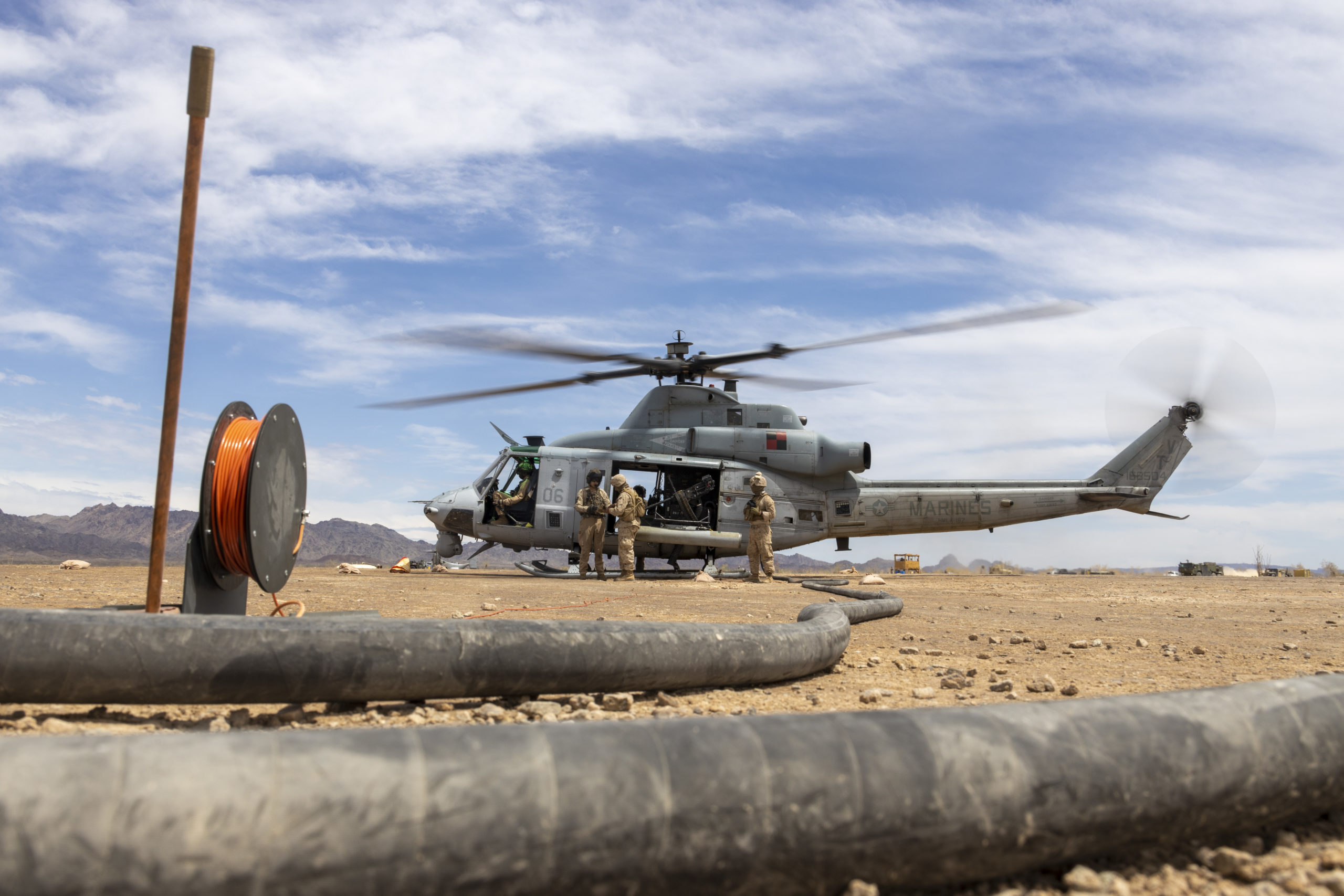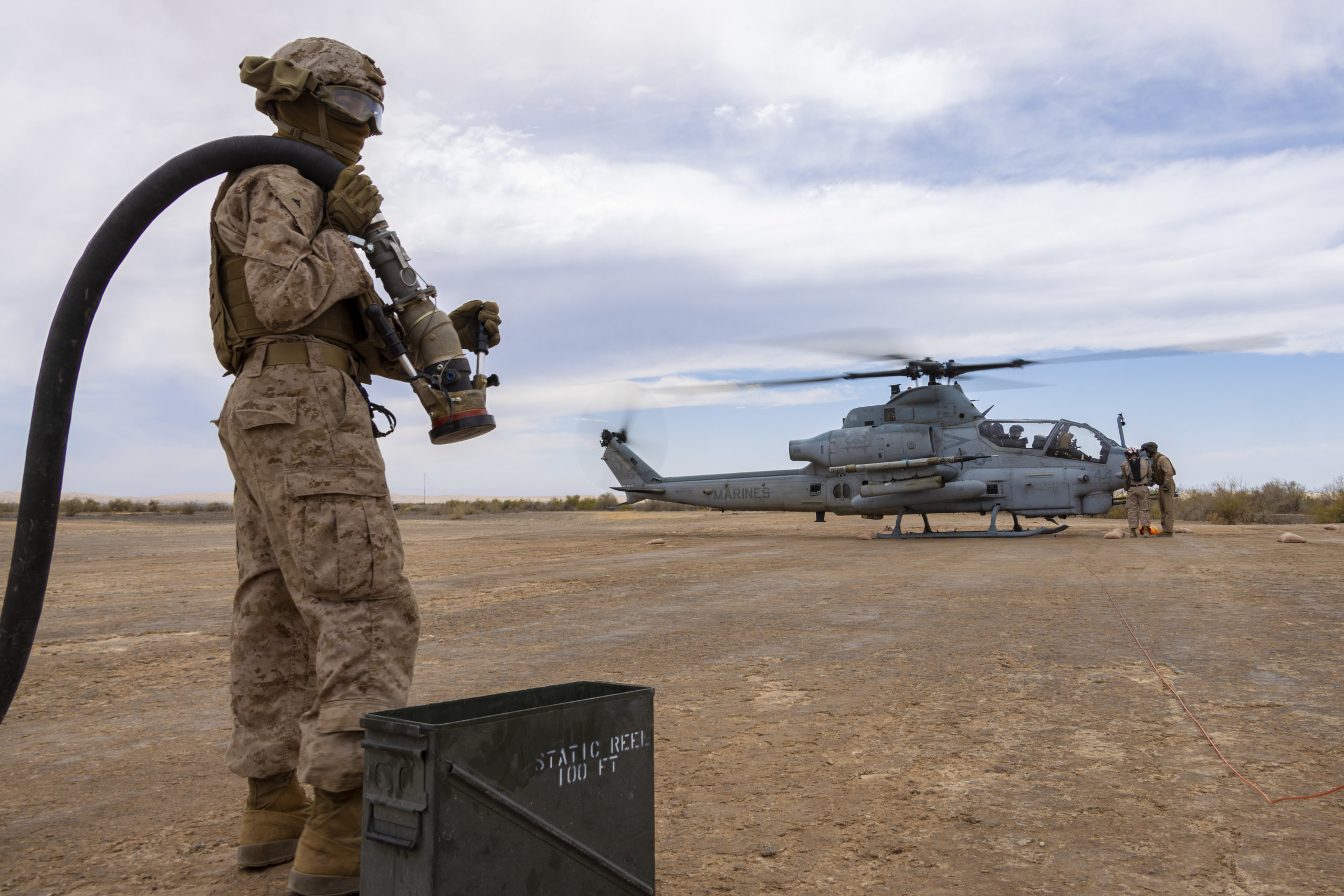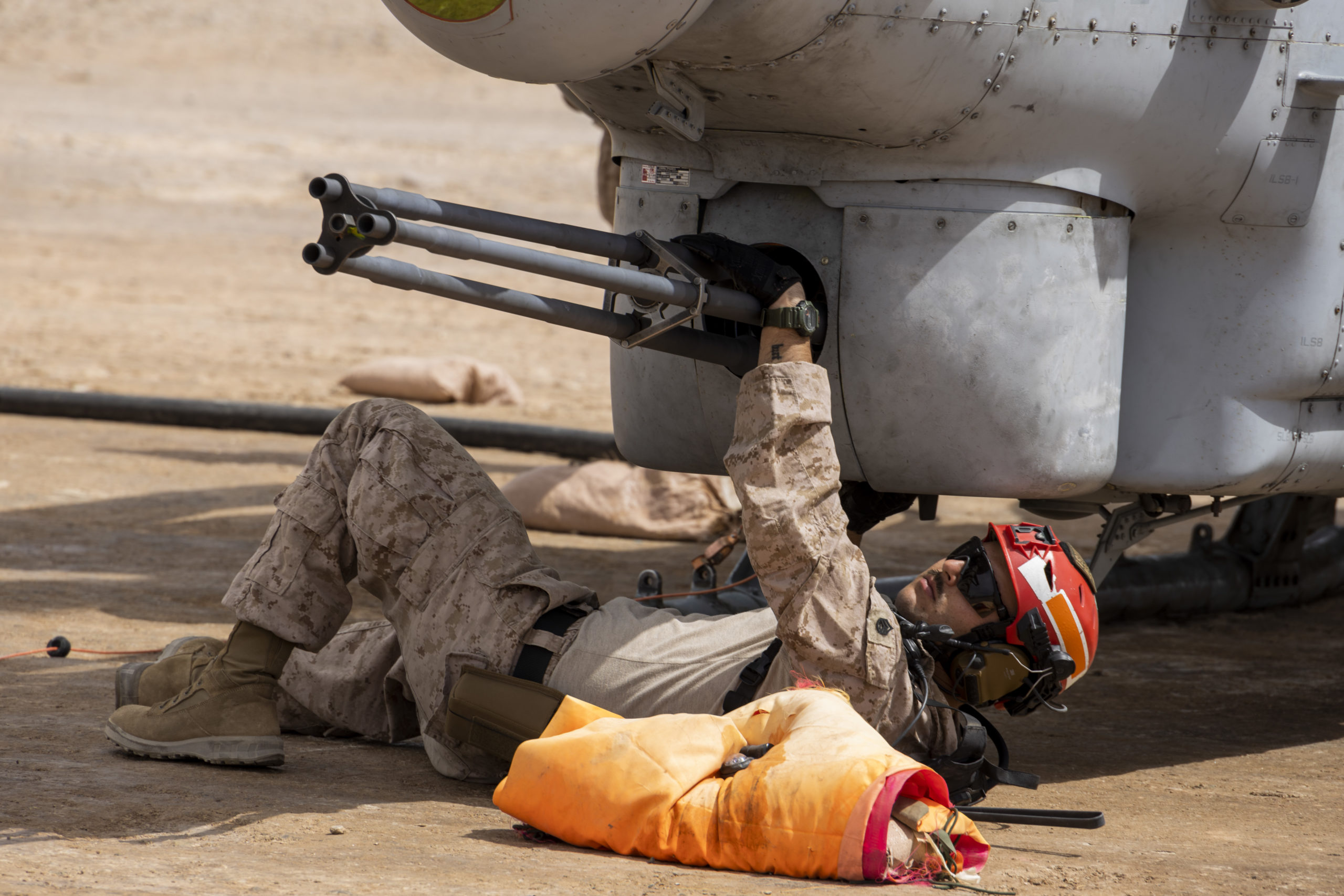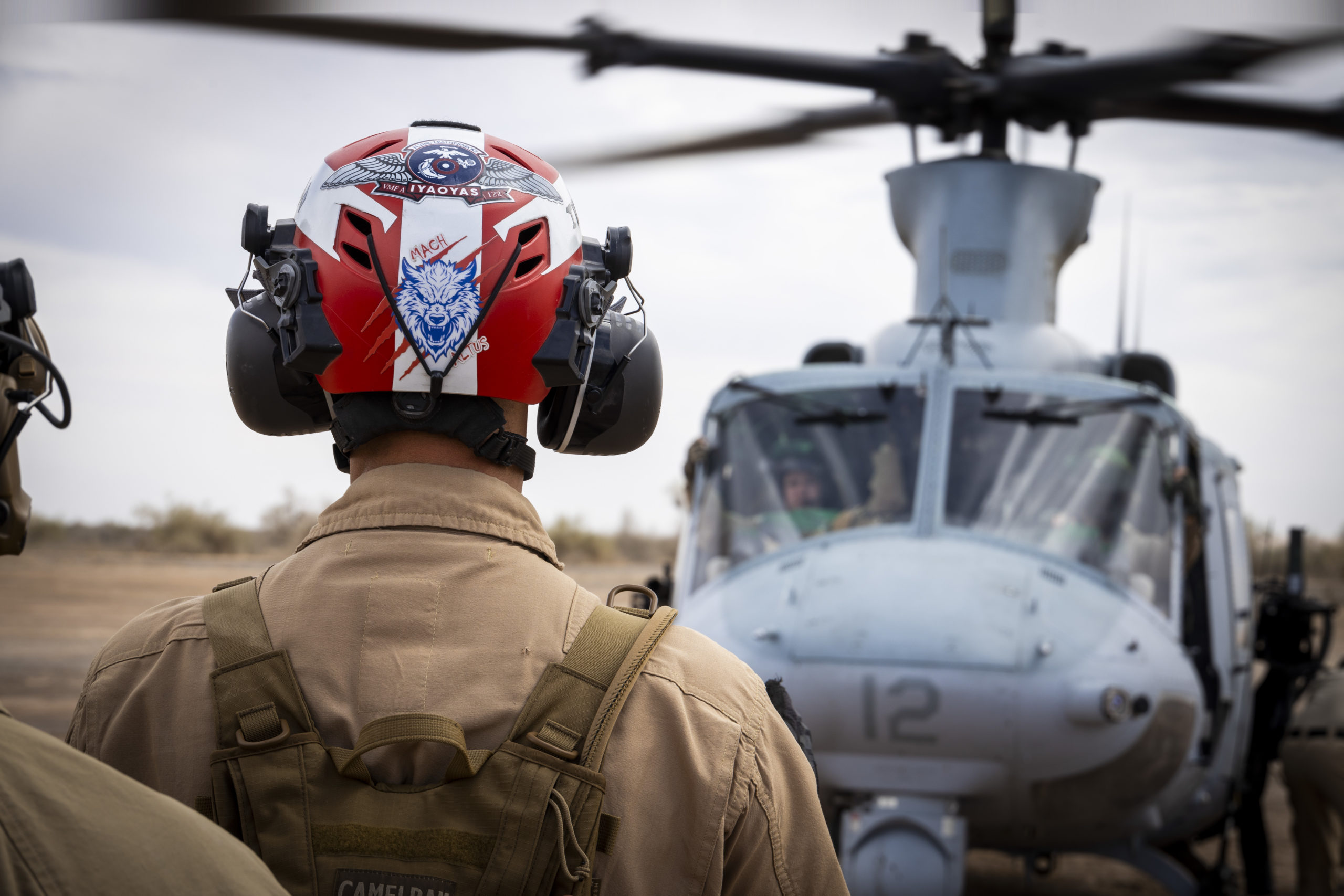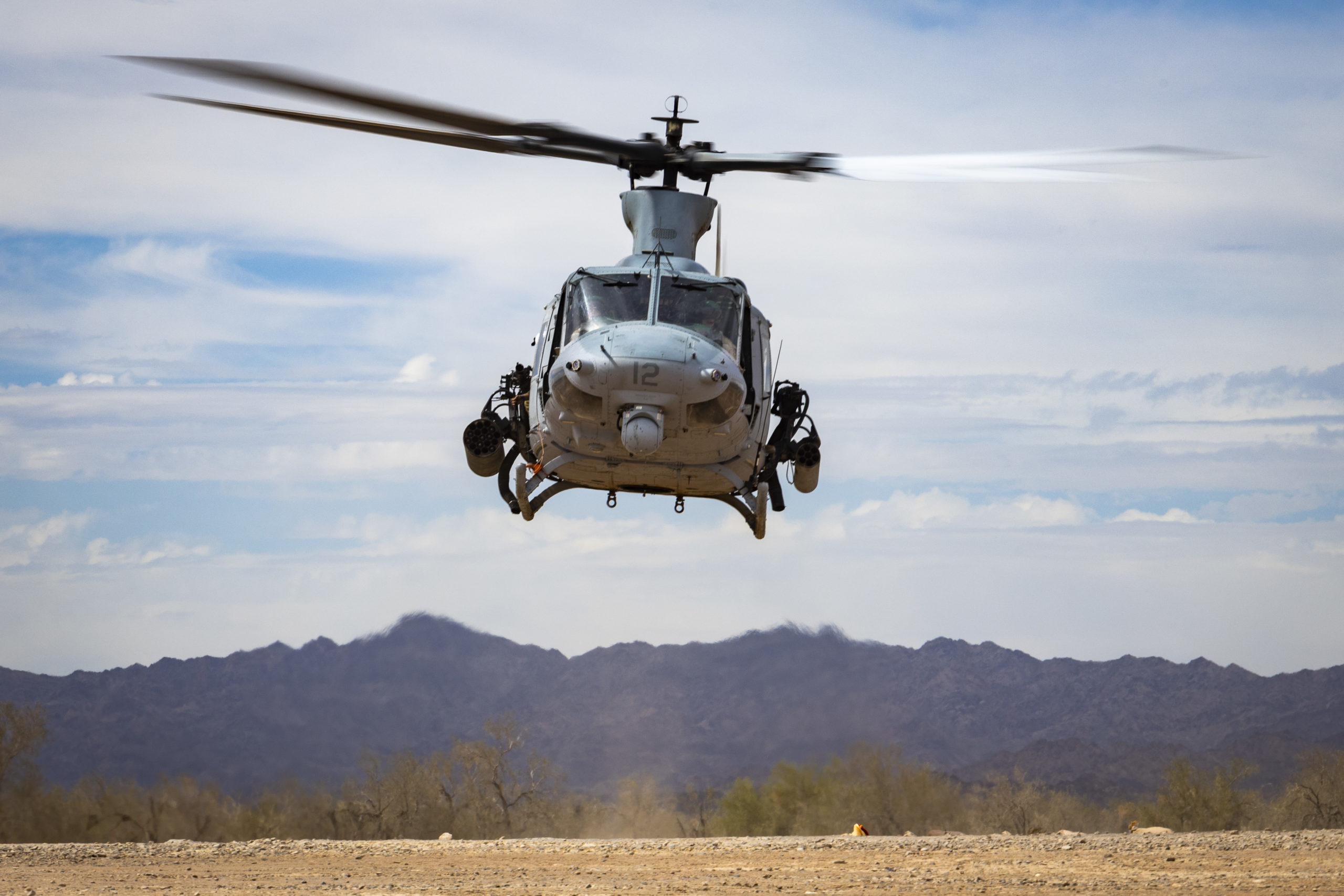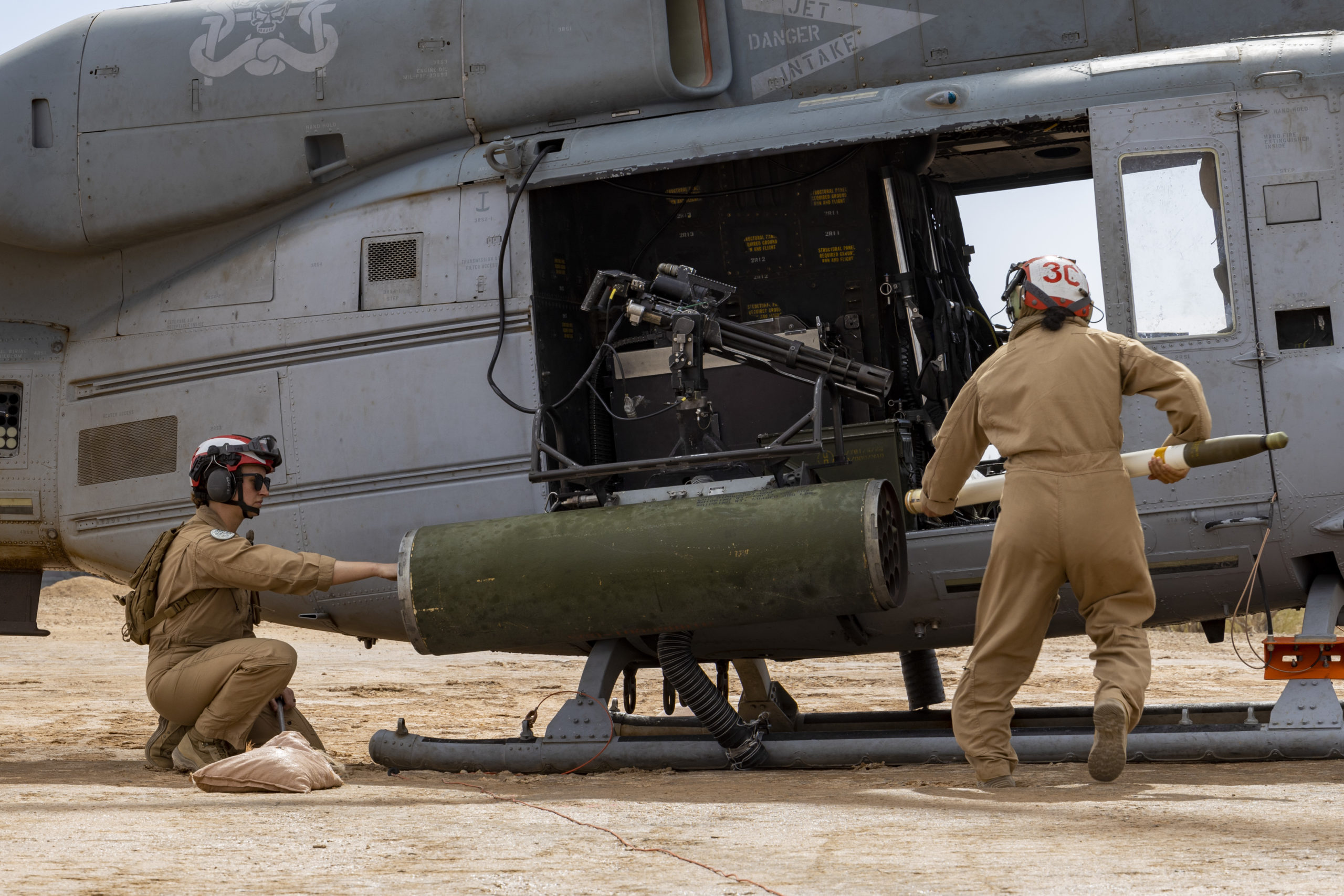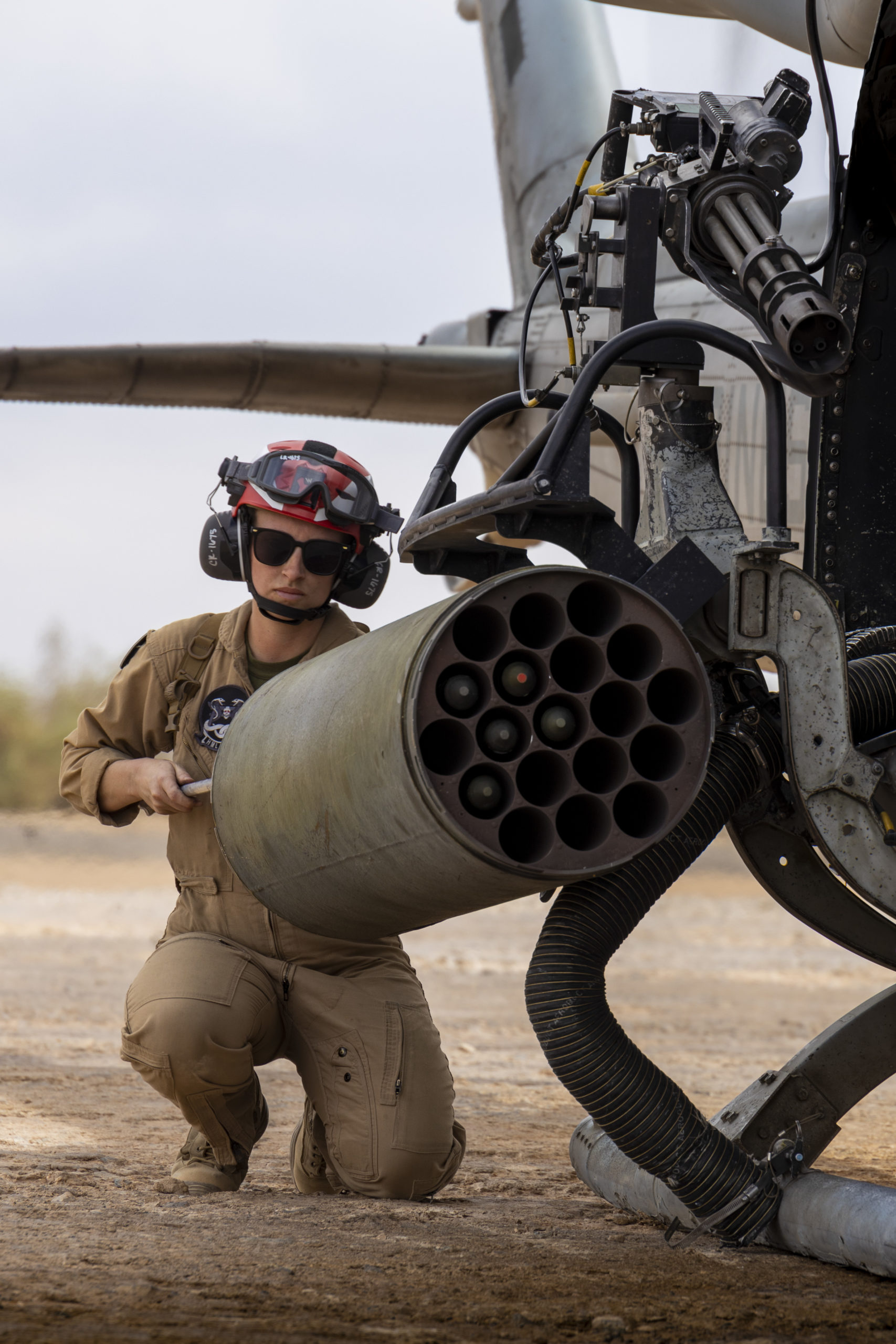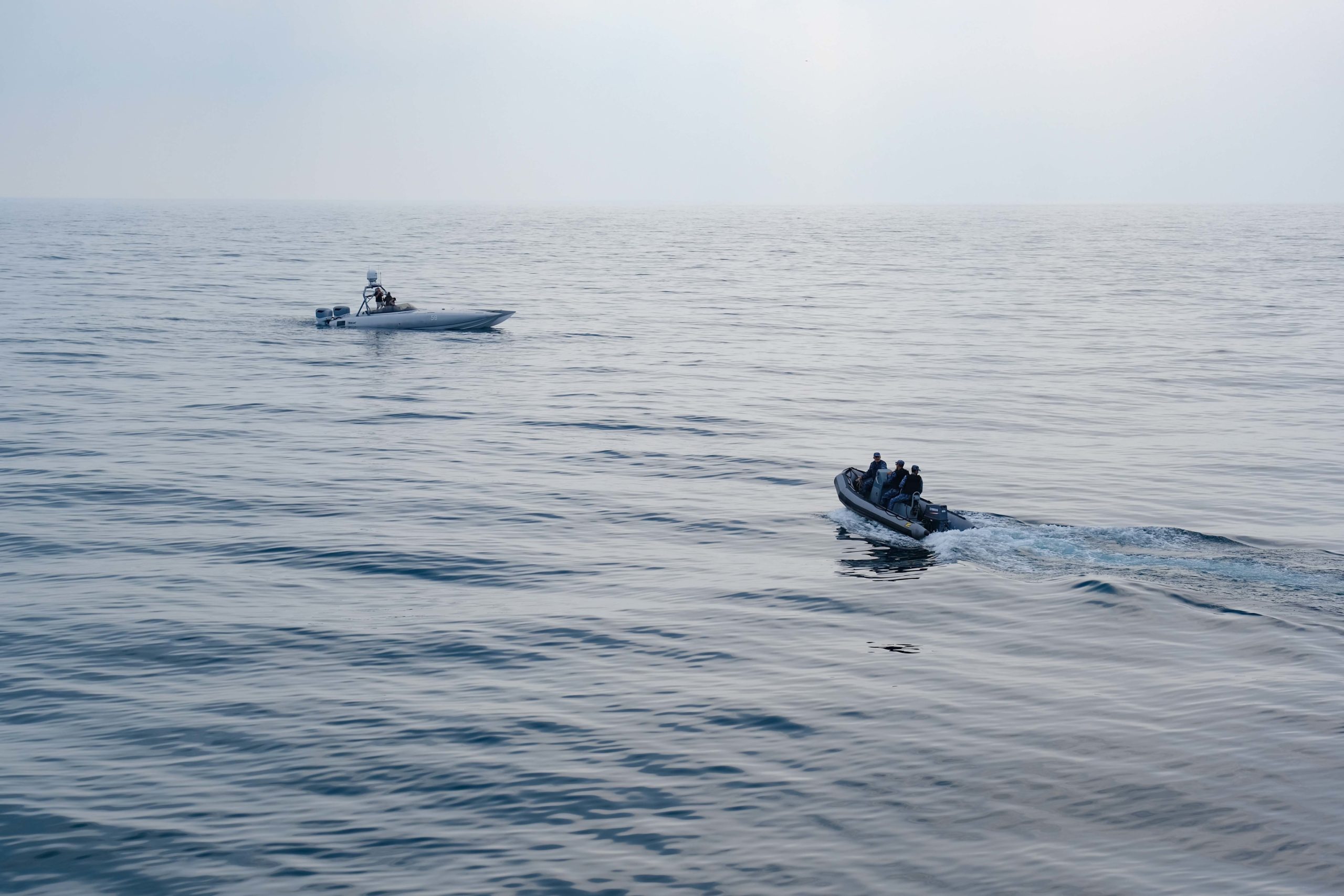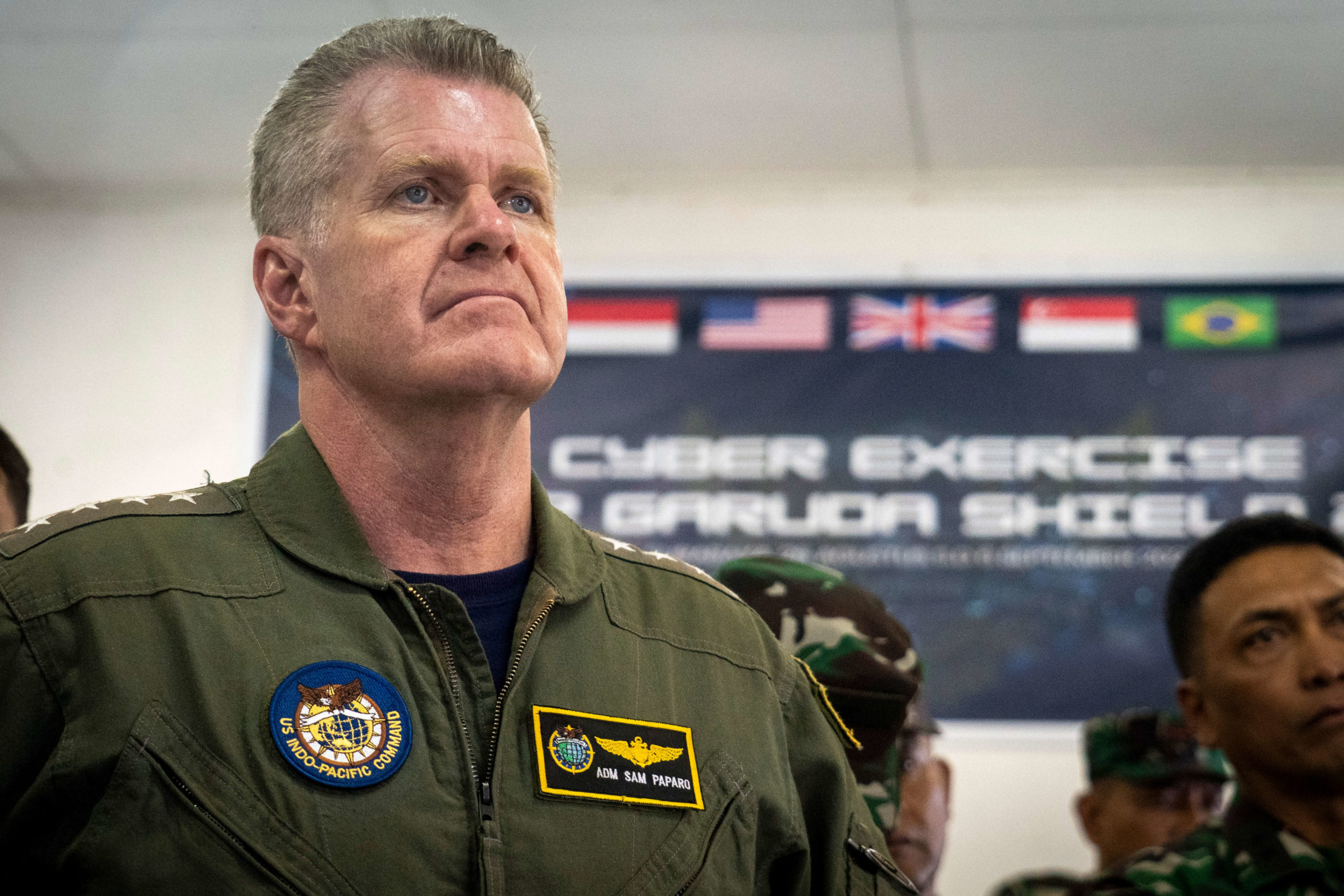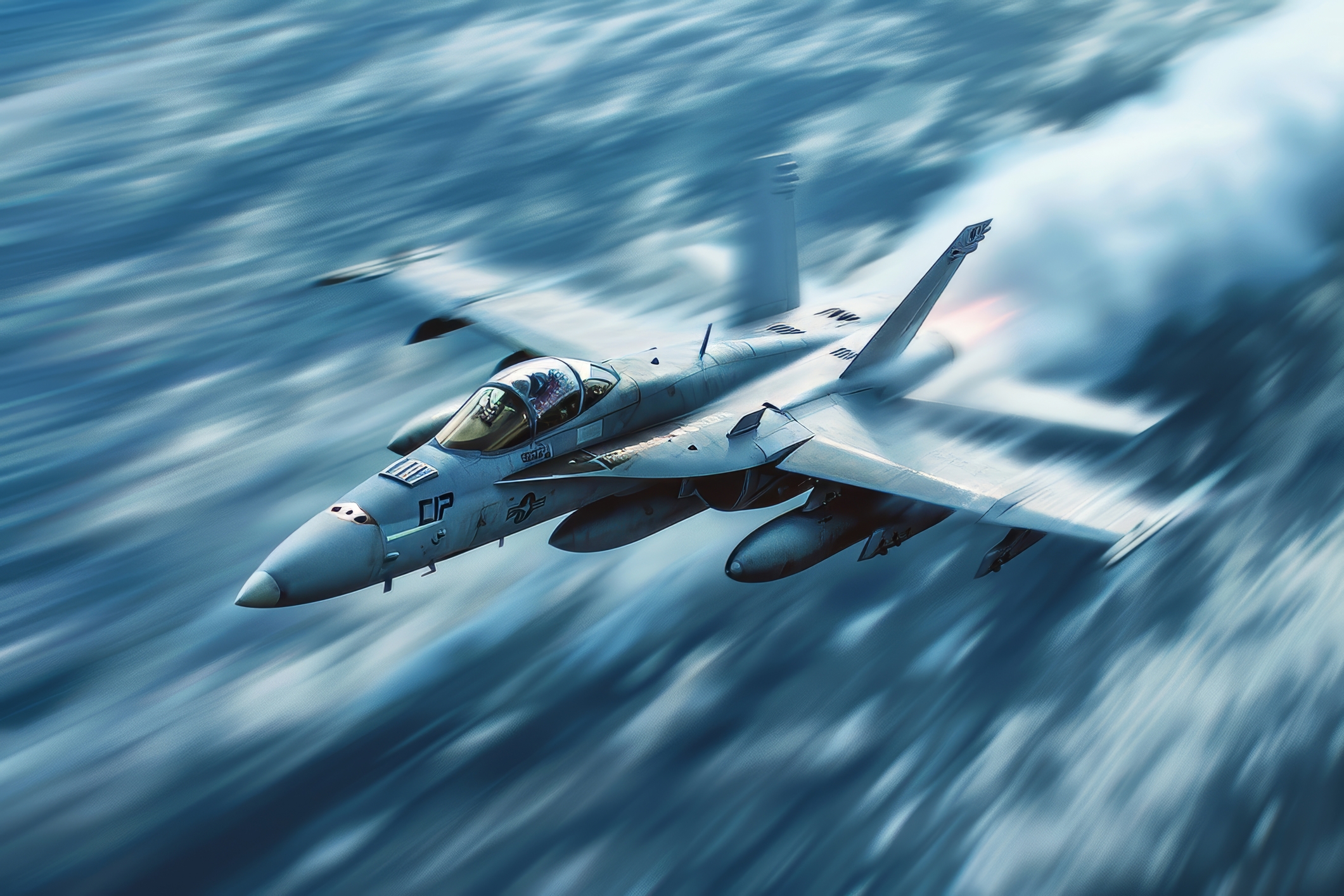By Robbin Laird
Recently the Commander of the U.S. Indo-Pacific Command presented testimony before the Congress. In this piece, I will deconstruct that testimony to highlight key elements for shaping a way ahead in the near to mid-term.
Not only is this necessary to focus on what the force needs now, but redesigning the force along these lines will not get us caught up into discussions of long-term acquisition choices. Such discussions are interesting and important, but the shift already underway in terms of operational readiness presages in my view a very different focus on paths to force modernization.
I will discuss my interpretation in the follow-on piece, but in this piece, I will underscore how one might read the Admiral’s testimony. As the Administration have underscored the importance of enhanced focus on the warfighter, we should pay close attention to a man who is regarded as a thoughtful warfighting Admiral.
He starts by examining what I believe is the key strategic change in the past 15 years, namely the rise of multi-polar authoritarianism. We are publishing book addressing the authoritarian’s path to 2025, and what it means.
But Paparo underscores really the key point: the authoritarian powers are increasingly active in reshaping the world in their image and working together. They have formed not so much a classic alliance, as an interactive set of working relationships. And they affect not only the military challenge but evolving global challenges to the U.S. such as de-dollarization.
Paparo underscores: ”The deepening cooperation between China, Russia, and North Korea threatens to exacerbate and accelerate security challenges in the Indo-Pacific, degrading safety and security and accelerating existing tensions and disputes in the region. Together, these countries’ growing ties create a complex, interconnected challenge to U.S. national security and regional stability.”
As a person who has worked for many years on the Soviet Union and then on Russia, it has always amazed me that so many analysts simply forget the size of Russia and that it is not simply a European power. Many politicians have made this mistake in the past.
He then goes on to discuss deterrence, crisis and conflict. Here he underscores that clarity is required in understanding the range of challenges facing our forces. It is not just about some abstract notion of deterrence but is about the ability on a daily basis to engage in crisis management.
Paparo highlighted how exercises are key to shaping concrete ways for our forces to work with allies and partners.
During a period of defense drawdown in the Obama Administration, I highlighted the scope and importance of exercises in what is now called Indo-PACOM. As I wrote in 2014 about the importance of exercises to operational capabilities:
“Exercise regimes are a crucial lifeblood for forging real capabilities and effective and innovative approaches to move forward”.
It was true then and even more true now as we focus more on force distribution and the use of advanced C2 and ISR to cross link forces for security, combat and deterrence purposes.
As Paparo underscores, the focus of the force is to be able to exercise decision superiority of the point of interest. And he fully understands that this is not possible without actual force structure operational agility demonstrated regularly through exercises and operations,
In fact, exercises and operations are increasingly decisively inter-connected.
Paparo notes: “In crisis, the Joint Force will gain early leverage over a range of scenarios and assess and adjust with decision superiority. The Joint Force must see, understand, decide, and act faster than any adversary to reduce the risk of miscalculation. Aligned with USNORTHCOM for homeland defense, USSPACECOM for activities in the space domain, USCYBERCOM for activities in the cyber domain, and USSTRATCOM to sustain strategic deterrence effects, USINDOPACOM forces are flexible and responsive to a range of crisis scenarios.”
When we turn next to the section of his testimony entitled “concentration areas,” we are now entering the key territory in terms of how the “fight tonight” force operates and also how to enhance its capabilities in the near and mid-term. I have focused in a great deal on this challenge over the past 11 years in my work with the Sir Richard Williams Foundation on the challenge from the Australian point of view and can underscore that Paparo and the Aussies are on the same page with regard to how forces need to operate.
He starts first with what he calls “information effects.” This would seem to be an odd place to start if one was a legacy Admiral. But Paparo is not that. I have visited the Information Warfare command in Suffolk and can underscore that the Navy is clearly focused on this priority and doing some very innovative work regarding force enhancement.
This is how he puts it: “USINDOPACOM’s approach elevates integrating informational and physical power into a core organizing, planning, and execution principle for all operations, activities, and investments (OAIs). Because deterrence is at the center of the command’s mission, the Joint Force must build the link between desired information effects and physical OAIs to assure adversary cognition of U.S. capability and will. This requires integrating the full spectrum of capabilities into each exercise and operation conducted in this theater. USINDOPACOM will be ready to conduct Counter-Command, Control, Computing, Communications, Cyber, Intelligence, Surveillance, Reconnaissance and Targeting (C-158 C5ISRT) in support of operations.”
I will discuss this in more detail in the next article. But what is crucial to understand is that the force is being distributed, it is leveraging C2/ISR to deliver the desired effects, and counter-ISR is a big part of the capabilities envisaged. When he later talks about maritime autonomous systems, in my own view, these systems can contribute significantly to his information effects core mission.
This is not platform centric per se, it is payload focused. And it is what we have described in our work as a kill web operating force. This focus raises significant questions about how to enhance warfighting capabilities in the short term; how we can better leverage the force we have now in terms of delivering more distributed maritime effects to a capital ship navy operating as a distributed force.
Paparo highlights a key approach necessary to drive the change to enable the “fight tonight” force to become transformed through operationally driven innovation.
This is how he expresses it: “Of particular note, USINDOPACOM is increasing dynamic combat power through experimentation. The Joint Force continues Rapid Defense Experimentation Reserve (RDER) experimentation at Joint Force exercises Valiant Shield, Northern Edge, and Gray Flag, along with Service or RDER specific events, such as at Balikatan and Technology Readiness Experimentation (T-REX). Experimentation in realistic scenarios addresses integration of new capabilities into existing forces, verifies prototype maturity, and develops or refines concepts of operation.
“While forces remain ready and lethal, USINDOPACOM requires continued investment in space superiority, AI-aided command and control, autonomous and AI-driven systems, and other capabilities to maintain advantage.”
Throughout his testimony he underscores the importance for U.S. forces to operate forward to be able to engage adversaries throughout the spectrum of conflict. But as any senior officer operating in the Pacific has known for many years, this requires the United States military to work closely with allies and partners. Working ways to inter-connect, to interoperate and to be integrated when possible is crucial.
Any thought that the United States is some sort of Pacific hegemon is not an operating principle. This is why overall working relationships with allies and partners is a core operating mission for American warriors in the Indo-PACOM region; it is not simply about preparing for kinetic action solely directed by the United States.
Paparo emphasizes: “The U.S. network of alliances and partnerships in the Indo-Pacific is pivotal to the Joint 330 Force’s success in crisis or conflict. Securing access, basing, and overflight (ABO) with the right forces at the right times ensures a mobile and distributed force disposition.
“USINDOPACOM works unceasingly to improve bilateral and multilateral relationships, secure agreements, and enhance interoperability. Such efforts include executing highly- visible military construction projects, conducting increasingly frequent and complex exercises with allies and partners, and pursuing ABO-focused agreements with critically situated allies and partners.”
When he turns to his priority force development requirements, they clearly are focused on ways to enhance the “fight tonight” force.
His first priority is upon the essential kill web enablers – C2 and ISR. These systems are crucial enablers for distributed force operations as well as to enable higher command functions as well.
When we published our 2013 book on Pacific defense we highlighted the challenge for the Navy and the joint force in building a 21st century version of the “big blue blanket.”
This is what we wrote then: “The kill web is a collection of sensors with C2, able to reach into those cascading sensor networks. Software technologies are key parts of the way ahead to allow for switching across secure domains to provide for a secure operational web. The U.S. Air Force and the U.S. Navy are working to shape a big blue blanket, 21st century style, in terms of interactive webs over the operational areas. In World War II, the U.S. Navy shaped what became called the big blue blanket of ships to cover the Pacific operations. Obviously, this is beyond the ken of current realities in terms of ship numbers but by shaping a connected set of U.S. and allied forces, a C2/ISR set of webs can deliver wider coverage than simply the number of ship hulls afloat.”
(Laird, Robbin F.; Timperlake, Edward. A Maritime Kill Web Force in the Making: Deterrence and Warfighting in the 21st Century (p. 23), Kindle Edition).
Paparo highlighted the core significance of evolving C2/ISR systems as follows: “Enhanced command and control systems will enable rapid decision-making and coordinated responses across the theater. In particular, USINDOPACOM requires long-range persistent targeting, comprehensive battle management, and joint edge networks.”
My own analysis is that there is a key difference between empowering and enabling the deployed and distributed warfighters making the decisions which they can make far better than distant central command authorities and the legacy over control of those authorities.
This is a central tension in force development but when you add in other key force developments, I think devolution of operational decision-making will be increasingly significant
For example when Paparo discusses maritime autonomous systems he highlights the following:
“AI-enabled autonomous systems provide significant and affordable asymmetric advantage. Forces able to develop, integrate, deploy, and rapidly adapt intelligent systems to changing conditions have defeated numerically superior opponents equipped with legacy technology. Layered, coordinated, asymmetric strategies alongside conventional weapons can defeat larger attacking forces.
“Uncrewed surface vehicles, autonomous aerial systems, low-cost one-way attack systems, and intelligent counter-unmanned aircraft systems capabilities from various vendors are key enablers. Expanded acquisition of additional autonomous aerial systems, AI-driven undersea vehicles, and enabling technologies for full deployment will provide critical capability in the Indo-Pacific.
“Posture and ABO remain key considerations for most autonomous systems due to range and endurance limitations. Additionally, planning and execution are underway for procurement, storage, operational testing, concept refinement, training, and maintenance of these intelligent systems.”
I think there is little question but that these systems will carry ISR at the point of interest enhancing significantly the local decision-makers knowledge of the local battlespace.
His discussion of fires follows his priority emphasis on C2/ISR capabilities. This makes a great deal of sense as the sensor-shooter shifts enabled by the fifth-generation transition precisely provides for ISR sensors on a variety of platforms then enabling weapons understood as payloads to be delivered from a variety of shooting locations.
This is especially true as the drone revolution unfolds. For example, the Houthis have been using a wide range of strike capabilities against shipping. The dilemma of using high-cost weapons to defend against much cheaper projectiles has been a key problem.
The USAF came up with a con-ops innovation to deal with the problem. F-16s operating in the Middle East have been using their LITENING targeting pods to identify targets and to kill or degrade those targets using laser guided weapons hitherto used in air to ground operations. The aircraft can carry weapons for higher value targets but have used a much lower priced weapon to kill many of the Houthi’s projectiles.
The challenge is as Paparo puts it: “We must sustain and upgrade our existing capabilities to ensure persistent mass of fires.”
I would argue that doing so will drive force development in ways not considered when simply projecting a new platform such as the F-47. The future is now.
And the evolution of fires requires the evolution of counter-battery capabilities as well. The good news is that the same C2/ISR enhancements enable both if the training and exercise regimes work effectively to do.
And finally, Paparo addressee what in my view is critical underbelly for any U.S. force operating in the Pacific: the tyranny of distance coupled with the limited basing options. While working force distribution, the logistical and sustainment challenge is multiplied. And frankly, I really don’t think enough resources or strategic realism exist inside the Beltway about this challenge. It is more politically desirable to break a bottle on a new platform.
There is no way to attenuate the logistics and sustainment challenge without allied and partner engagement; there is no way to attenuate it without stockpiling; there is no way to attenuate it without base diversification; there is no way to attenuate it without rethinking how on earth the Air Force and their agile combat employment approach can work with the Navy’s distributed maritime operations approach. And how on earth is someone moving the Army and its missiles in such a situation?
And the question of how an arsenal of democracy can build the supplies necessary to empower an operational force is beyond the ability of the United States and I would argue not even desirable to do so.
For example, in my discussion of Australia and Pacific defense, I discussed a possible way ahead with Stephen Kuper during my October 2024 visit to Australia. And this is what we discussed:
Rather seeing Australia doing limited production for itself, the United States and Europe would expand their notion of security of supply beyond what they produced in their home markets for export. Rather, American and European investments would be made to jointly procure the magazine depth which allied forces need. This also would allow for a more secure location from which to move necessary support to deployed forces.
This is how he put it: “The U.S. and Australia joined by perhaps Japan and South Korea would shape a joint order book to shape a predictable and steady stream of orders which would allow plants in Australia to attract the investment they need to build out capacity.
“This might well attract investment from the larger investment funds because of predictable and steady production at scale from Australian plants for the ADF and allied forces. This would also lead to sorting through the logistical means necessary to move munitions to the partners and to their operational forces.”
This is what I call “embedded logistics” whereby one designs the support center with modes of delivery built into the production construct.
The point can be put bluntly: our capabilities to support our forces with the munitions they need are simply not there.
And the logistical capabilities to move the munitions we do build are inadequate. Simply stockpiling some stock in Australia for U.S. forces will be too little and too late.
We need a reconceptualization of the production-support-logistical system. This is one way to do so.
Paparo had a section in his testimony devoted to the challenge of sustaining the force.
Success in any contingency depends on robust logistics and infrastructure networks that can withstand sophisticated attacks while supporting distributed operations. Hardening existing facilities against missile and cyber-attacks represents the Joint Force’s first line of defense and requires significant investment in protective measures 434 and redundant systems.
USINDOPACOM continues to develop Joint Theater Distribution Center site concepts. These locations will serve as critical logistics distribution nodes for receiving, processing, and redistributing supplies across the Joint Force.
The command focuses on enhancing resiliency and agility by increasing the number of locations with access to assured fuel inventories and/or government-owned stocks. Over the past year, Defense Logistics Agency (DLA) Energy has delivered eighteen access points through a variety of acquisition approaches. USINDOPACOM continues to expand capability through other means, such as leasing assured fuel stores in Defense Fuel Support Points throughout the Indo-Pacific theater.
Since FY21, USINDOPACOM has planned major MILCON projects to increase fuel posture, including completed projects at the Port of Darwin and RAAF Darwin. We also continue to operationalize our afloat consolidation tanker operations throughout the Indo-Pacific and to refine this usage through increasing activity associated with inventory repositioning.
Sustaining our forces in contested environments is critical. To support this effort, the Joint Force must leverage initiatives such as Regional Sustainment Framework (RSF), to strategically partner with allies and partners in the Indo-Pacific. Initiatives like RSF, the multi-national Partnership for Indo-Pacific Industrial Resilience, and the U.S. – Japan Defense Industrial Cooperation for Acquisition and Sustainment facilitate shared investment for co-sustainment, enhancing deterrence, readiness, and lethality even in contested environments.
What Paparo’s testimony provides is a realistic assessment of the challenges facing the “fight tonight” force and what needs to be prioritized.
You don’t have to agree with every word in the testimony to get the point that a priority set of investments need to be made now and not simply to wait until the platforms of future arrive sometime in a distant future.
The future is now.
Featured photo: U.S. Navy Adm. Samuel J. Paparo, commander of U.S. Indo-Pacific Command, observes a cyber exercise (CYBEREX) as part of Super Garuda Shield 2024, Aug. 31, 2024, Surabaya, Indonesia. Super Garuda Shield is an annual exercise that has significantly grown in scope and size since 2009. Super Garuda Shield 2024 is the third consecutive time this exercise has grown into a combined and joint event, focused on commitment to partnership and a free and open Indo-Pacific. (U.S. Air National Guard photo by Staff Sgt. Orlando Corpuz)



